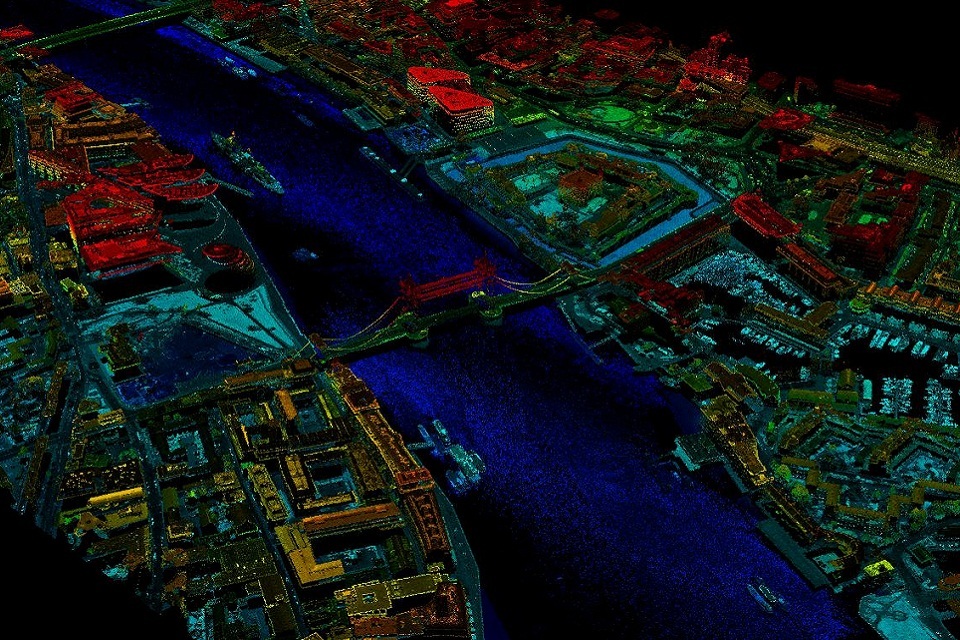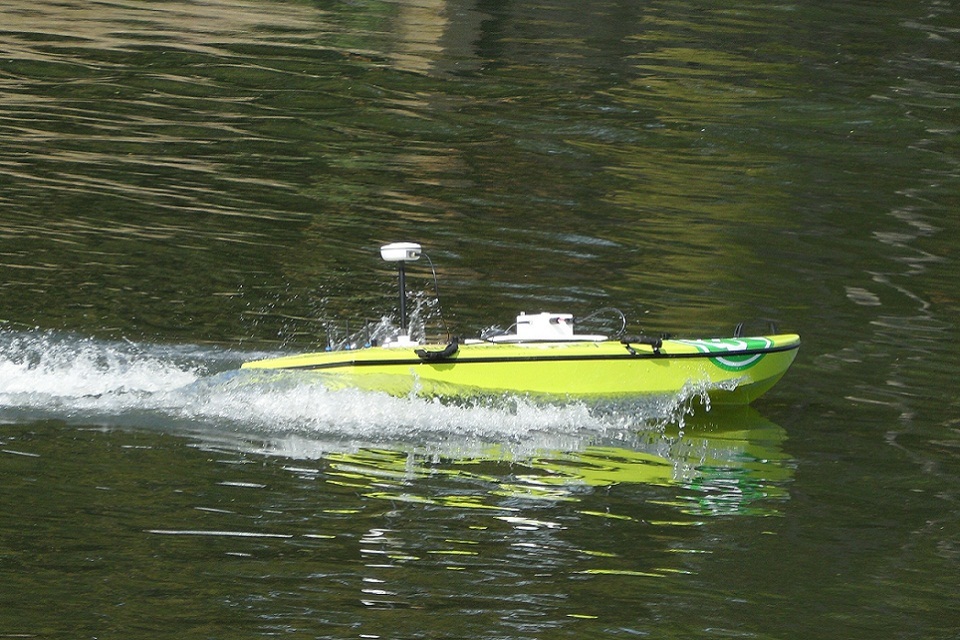Environment Agency reveals top flood-tackling gadgets
The Environment Agency has revealed unusual kit used to tackle flooding including a remote-controlled robot called Mr Nosey.

With lights for eyes and a camera for a nose, Mr Nosey travels through underground tunnels a mile long
The Environment Agency has revealed its armoury of unusual kit used to tackle the spectre of flooding including lasers, solar-powered cameras, a gadget-laden incident vehicle and its latest ‘weapon’ - a remote-controlled robot called Mr Nosey.
Mr Nosey is a new invention being used to investigate causes of flooding that people can’t reach, such as blocked tunnels and underground culverts. Fitting into spaces as small as 6 inches in diameter, he uses the camera on his nose to inspect underground tunnels more than a mile long.
There are more than one million miles of culverts in England that can cause flooding to homes and businesses when blocked. Items which have been found down culverts include old lawnmowers, children’s toys and Christmas trees.
The robot, which weighs 30kg to prevent it from being swept away in fast-flowing water, travels through underground tunnels while sending real-time images to the surface so that Environment Agency staff can assess the damage or blockages below.
John Curtin, the Environment Agency’s Executive Director of Flood Risk Management, said:
Almost 5 million people in England live in areas at risk of flooding and innovations ranging from little gadgets like Mr Nosey to our new state of the art incident vehicles are hugely important. They are the little brothers to our larger scale flood defences, such as the iconic Thames Barrier, but all of them help us to reduce that risk. As winter approaches, we also encourage people to prepare for potential flooding by checking the flood risk in their area and signing up to free flood warnings.
Environment Minister Rory Stewart said:
Flooding can have a devastating impact on lives, homes and businesses.
We are making the most of new technology to help people prepare for potential floods. From ultra-sonic scans of riverbeds on remote controlled boats to robots scouring culverts, we are supporting communities stay protected should the worst happen.
To help protect families across the country, we are investing in flood protection at record levels with an unprecedented six-year commitment of £2.3 billion to better protect an additional 300,000 homes by 2021.
Some of the other interesting ways the Environment Agency fights flooding include:
Lasers
The Environment Agency’s aerial survey team use lasers to map and scan the English landscape from above. This data is used for flood modelling and to track changing coastal habitats. The aerial survey team typically capture LIDAR (Light Detection and Ranging) data in the winter months when leaf cover from trees is at a minimum, to ensure height data is as accurate as possible. The images can be captured day or night.

An aerial image of London's Tower Bridge captured using laser technology to map the landscape
LIDAR data also has some surprising uses. Minecraft players have requested the data to help them build virtual 3D worlds; archaeologists use it to map and visualise ancient landscapes such as Roman roads in Cheshire; the data is also used by the wine industry to identify new land to grow better grapes.
Incident Command Vehicles
When flooding is about to strike, the Environment Agency’s Incident Room is opened and emergency response teams spring into action. The incident command vehicles are one of the first on the scene and use satellite communications to send live footage back to Environment Agency HQ. The vehicles are kitted out with the latest technology to provide emergency response teams with up-to-the-minute briefings and the on-board generator means they can operate from the most remote locations. The only thing they are missing is an ejector seat.
Amphibious Weed Cutting Boat and the Robomower
The Environment Agency’s Amphibious Weed Cutting Boat trawls land and water, clearing overgrown weeds with a giant chainsaw to maintain the flow of rivers and prevent blockages that cause flooding. Its partner in crime, the Robomower is a remote controlled grass cutter used for the same purpose on steep grass flood banks to keep grass and bushes to a minimum.

The Amphibious weed cutting boat in action
ARC boats
ARC (Acoustic Remote Controlled) boats use ultrasound pulses - similar to those used to scan pregnant women – to collect information about how much water is flowing in rivers. This data is used to monitor river levels and predict when flooding may occur. The boats can be used on areas of a river that it would be too dangerous to get to otherwise, such as under bridges or in fast-flowing currents.

ARC Boats use ultrasound pulses to collect data about how much water is flowing in rivers
Solar powered cameras
The Environment Agency has recently installed solar powered cameras at locations around the country to monitor water levels in crucial areas. The cameras are linked to Twitter and when residents have signed up to the service, they will receive alerts and photos via twitter when water levels rise significantly.
The Thames Barrier
Last but not least, the Thames Barrier – one of the largest movable flood barriers in the world – is a more traditional type of flood defence. Spanning 520 metres across the River Thames near Woolwich, the barrier protects around £200 billion of assets within London including 500,000 properties, London’s financial and business centre and 1.25 million people living and working within London.
It has 10 steel gates that can be raised into a position of defence across the River Thames. When raised, the main gates stand as high as a 5-storey building and as wide as the opening of Tower Bridge. Each main gate weighs 3,300 tonnes. The barrier is closed under storm surge conditions to protect London from flooding from the sea.

The Thames Barrier protects more than £200bn of assets in London including half a million properties
The Environment Agency is encouraging people to check their flood risk and sign up for free flood warnings.